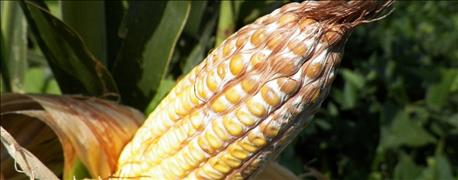
Dennis Bowman, University of Illinois extension educator, says corn ear rots and kernel molds occur every year in varying degrees.
Lance Tarochione, Asgrow/DeKalb technical agronomist, agrees, “You always have some rot out there, and at low levels it impacts quality more than yield,” he says.
“Weather extremes - too cold, too hot, too wet or too dry - we have an ear rot that likes that,” Bowman says. Crops this season have been hit with rain, hail, cold snaps, heat and wind.
Tarochione says rain events in July and warm, foggy mornings set fields up for foliar disease, ear rot pathogens and kernel molds. Diplodia, Fusarium and Gibberella were on the radar in early August. “We’re already seeing more Diplodia than I’d like to see,” Tarochione adds. “That’s the scariest one.”
Bleached husks are the first indicators for Diplodia ear rot in the fall. Angie Peltier, University of Illinois extension educator, says farmers can identify Diplodia by pulling back husks and checking for “thick, white moldy growth on or between the kernels”.
If farmers find ear rots or molds in fields, Peltier recommends adjusting combine header speed to minimize cracking and decrease the amount of broken or infected kernels that end up in grain. Bowman stresses the importance of cleaning and drying grain as quickly as possible. Running grain through cleaners and “getting grain down to a good storage temperature” is crucial.
Farmers who aren’t planning to store their grain can run into other challenges.
“It (ear molds and kernel rots) can become a marketing issue, grain elevators may start assessing docks or reject grain if it’s really bad,” Tarochione says. “We’re hoping that we’re lucky and we don’t get to that point.”
About the Author(s)
You May Also Like




